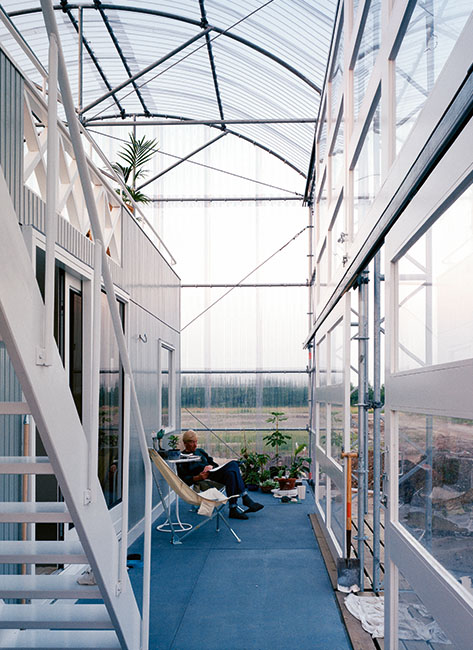Eternal Spring
Eeuwig lente
Abstract
One of the most pleasant spots in my house is the bench against the south wall, next to the fence and under my upstairs neighbours’ balcony. Normally the Dutch climate would preclude sitting outside without a jacket in mid-October, but in my special spot it’s at least 20°C. I celebrate the first days of spring there, and even on some dry but sunny winter days it’s bearable. This space of a few square metres forms a transition zone between the controlled internal climate of my home and the external climate of my garden, which varies swiftly in our climate zone.
In architecture there exists a complete typological family of such transition spaces, with the conservatory and the atrium as the most important main types. They form a buffer between the external and internal climate, but they also offer an additional living area with its own ambiance and use. Created for reasons related to home comfort and protection from rain, heat and wind, these transition spaces can also serve very effectively as ‘passive sustainability systems’. Unlike the majority of the usual sustainability techniques and systems, the transition space is primarily spatial, rather than technical in nature. If there is such a thing as an architecture of sustainability, the transition space plays an important role in it.



